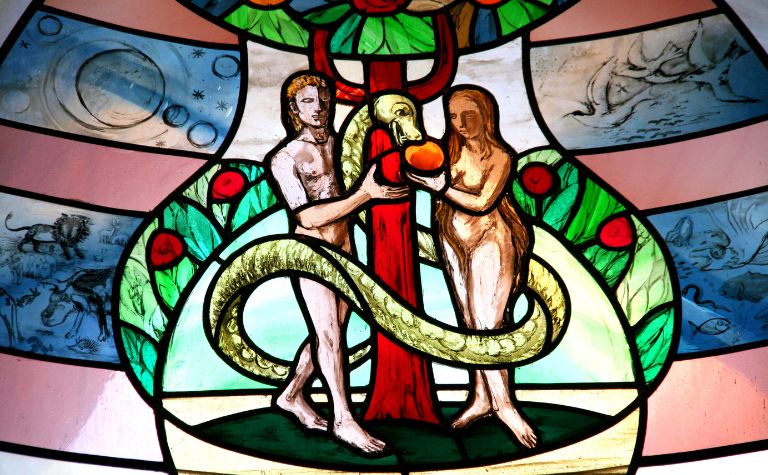The Garden of Eden plays an important role in the early chapters of Genesis. God created Adam, planted the garden, and placed the first man in it (Gen. 2:8). God later created Eve and placed her in the garden with Adam (Gen. 2:18-25). Sadly, God later banished the first couple from the garden after they sinned against him (Gen. 3:24). Many readers of this story wonder where the garden was located.
Bible scholars who think it’s possible to make an educated guess about the Garden of Eden’s location suspect it was in southern Mesopotamia, i.e., the Middle East. Yet, others think it’s impossible to locate it because, despite the details Genesis mentions, the flood changed the region’s topography.
Was the Garden of Eden a real place? What verses in Genesis suggest that it was? What’s an example of a scholar who believes the garden was in the present-day Middle East? What’s an example of someone who argues that it wasn’t? Keep reading to learn the answers to these questions and others.
Also see What Happened To the Garden of Eden? to learn more.

Was the Garden of Eden a real place?
According to many Bible scholars, Genesis includes details that reveal that the Garden of Eden was a real place. The word “Eden” likely refers to an area larger than the garden itself. Genesis 2:8 explains that “God planted a garden in Eden, in the east” (ESV, emphasis added). However, the location is referred to as “the Garden of Eden” elsewhere in Genesis and the Old Testament (Gen. 3:23-24; Ezek. 36:35; Joel 2:3).
Why does Genesis say Eden was “in the east”? Most scholars believe the direction reflects the location of the author. One Genesis scholar explains, “Its situation is then defined by reference to the author’s position ‘in the east,’ i.e. east of the Land of Israel… ‘in the east’ appears to locate Eden somewhere in Mesopotamia or Arabia.” [1] However, some interpret the statement as the garden being in the eastern part of the area of Eden.
What’s the significance of the four rivers? Another description in the passage that some commentators think serves the purpose of geographically locating Eden is the mention of four rivers in Genesis 2:10-14. While some scholars believe the description comes from ancient myths [2], others believe it reflects pre-flood Mesopotamian geography.
According to the passage, a river started in Eden, where it flowed out and turned into four waterways (Gen. 2:10). Most scholars aren’t able to confidently identify the first two rivers the description mentions — the Pishon and the Gihon (Gen. 2:11-12) — though a few speculate that they are the Ganges or Indus and the Nile, respectively.
The other two rivers, the Tigris and Euphrates (Gen. 2:14), were well-known in the ancient world just as they are today. The Tigris and Euphrates have their source in the mountains of eastern Turkey, flow south, and exit into the Persian Gulf. The rivers cross over land in Turkey, Syria, and Iraq.
What do non-mythological interpretations teach? Even scholars who believe the passage describes actual geography suggest that people today can’t discover all the details about the rivers because the flood in Noah’s day (Gen. 6-9) changed the region too much. One writes, “It is evident that the geography described in these verses does not exist in the present world, nor has it ever since the Flood.” [3]
How does the meaning of the passage change if the description is mythical? Genesis scholars have heated debates on if the passages, especially in the early section of the book, are historical accounts of mythical descriptions. An example of a meaning that various perspectives share is that the description of the rivers is intended to help the reader understand how beautiful and perfect Eden was.
Genesis scholar Kenneth Mathew writes, “Although the location remains elusive for the modern cartographer, the point of the description is clear for the reader: the habitat God has prepared is bountiful and beautiful. It has a rich resource of life-giving water and is adorned with precious metals and jewels.” [4]
Also see What Is a Serpent in the Bible? to learn more.

Was the Garden of Eden in the Middle East?
The French Reformer John Calvin (1509-1564) believed that the Garden of Eden was in the Middle East. He argued that the Tigris and Euphrates rivers mentioned in Genesis 2:10-14 are the same ones in the region today.
Calvin wrote, “Moses says that one river flowed to water the garden, which afterwards would divide itself into four heads. It is sufficiently agreed among all, that two of these heads are the Euphrates and the Tigris; for no one disputes that . . . (Hiddekel) is the Tigris.”
However, Calvin acknowledges that the flood changed the region: “From this difficulty, some would free themselves by saying that the surface of the globe may have been changed by the deluge.” [5]
Likewise, the conservative Lutheran scholars Keil and Delitzsch believe the garden was in the Middle East. They write, “Of the four rivers whose names are given to show the geographical situation of paradise, the last two are unquestionably Tigris and Euphrates.”
Also see Why Don’t Christians Read the Book of Enoch? to learn more.

An example of someone who doesn’t believe the Garden of Eden was in the Middle East is Ken Ham from the ministry, Answers in Genesis.
His argument comes from understanding that there are fossils under the possible locations of the garden, suggesting that living things died there. Since there was no death before sin entered the world, which it did in the garden, the Middle East couldn’t have been its location.
Ham writes, “No one can logically suggest that the area where the present Tigris and Euphrates Rivers are today is the location of the Garden of Eden, for this area is sitting on Flood strata containing billions of dead things (fossils). The perfect Garden of Eden can’t be sitting on billions of dead things before sin entered the world!” [6]
Yet another commentator locates the garden in the Persian Gulf. “This has made many suppose that the site of Paradise was in the Persian Gulf, in a region now submerged; and the Babylonian legends actually place it there, at Eridu, at the junction of the Tigris and Euphrates.” [7]
Also see Who Wrote the Book of Genesis? to learn more.
References:
[1] Genesis 1-15 by Gordon Wenham. p. 61.
[2] The Book of Genesis: Chapters 1-17 by Victor Hamilton. p. 168.
[3] The Genesis Record by Henry Morris. p. 89.
[4] Genesis 1-11:26 by Kenneth Mathews. NAC. p. 208.
[5] Commentary on Genesis by John Calvin. Genesis 2:10-14.
[6] Source
[7] Ellicott’s Commentary for English Readers. Genesis 2:10.
Related Questions
Genesis 6:1-4 is one of the most mysterious and debated passages in the first book of the Bible. Many people find that interpreting the verses is challenging because the text doesn't directly...
The flood story in Genesis highlights the righteousness of Noah and his faith in God. However, the narrative ends in a tragic scene that includes Noah's drunkenness, Ham's unrighteousness, and a...
